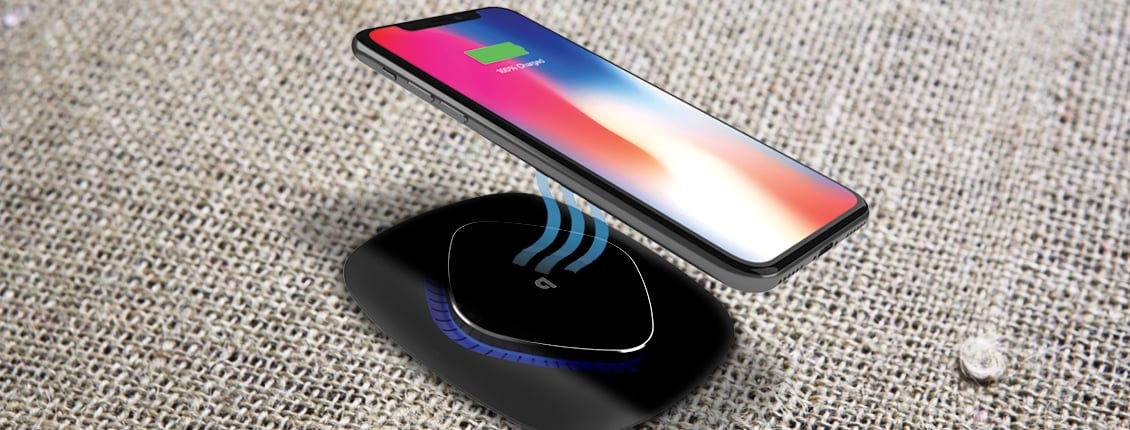
Cords and cables can be a thing of the past thanks to Qi wireless charging technology.
“The global wireless charging market is anticipated to reach $20.97 billion by 2023, registering a compound annual growth rate of 40.97% between 2018-2023,” according to a new market intelligence report by BIS Research, titled ‘Global Wireless Charging Market – Analysis and Forecast, 2018-2023.”
Choosing from wired and wireless charging is something of a challenge for many consumers. With the growth of Qi, chargers are more affordable than ever before.
If that entices your customers, how do you encourage them to move forward with Qi wireless charging?
By getting them all of the information they need and want.
What Is Qi Wireless Charging?
Wireless charging is a new kind of technology that allows users to charge their smartphones, tablets, and other compatible devices over short distances without the use of cables.
There is a wide variety of competing open interface standards in the world of wireless charging.
The most popular one is Qi (pronounced ‘chee’), developed by the Wireless Power Consortium.
From a more technical standpoint, Qi defines wireless power transfer using inductive charging.
The system uses a charging pad and a compatible device, which is placed on top of the pad, charging via resonant inductive coupling.
What Makes It So Appealing?
There are many benefits of wireless charging.
Seamless Experience
The main benefit is that it can be used by more than one device in the same setting. If users need to charge their tablet but don’t have a cord to connect it to anything, Qi charging can be used.
Integrated wireless charging creates a clutter-free environment, thus reducing unnecessary stress due to the clutter, and ensures devices are always powered.
Charging pads are easy to use and convenient when a tech user has time to charge. According to Digital Trends, “One of the big advantages is that wireless charging pads don’t require the same level of maintenance as USB ports do.”
USB ports and chargers not only have that level of maintenance to deal with—they run into potentially serious safety risks as well.
Safety Issues
Plugging one’s smartphone or tablet into an electrical outlet means that the device is directly exposed to electrical connectors. This can create bursts of electricity that can harm the connection. Not only that, but it also potentially emits electrical shocks that can hurt the unknowing individual.
This direct exposure to electric sockets is one of the big reasons wireless charging has become a viable trend of the future.
It is considered to be much safer than its predecessor.
This is a huge selling point for businesses to take advantage of when presenting benefits to wireless charging pads to their target customers. If their customers include parents, they will want to present the idea of their customers protecting their children.
Without the use of USB ports in electrical sockets, it is also a welcome hello to saying goodbye to charging cables.
Buh-Bye, Cables
Another huge benefit to wireless charging is the disappearance of cables.
The use of cables is an annoying hassle, which tech users don’t want to deal with. Charging cables don’t exactly have long shelf lives, especially if they are being used on a regular basis. The use of cables also leads to the charging ports of cell phones experiencing burnouts thanks to the constant charge it gets via the wired connection.
The reason this happens is that charging ports are very fragile and exposed to elements that can easily damage them. This is why cables are more of a burden in the age of wireless charging. Wireless charging provides a cost-efficient solution to common charging problems. With more cables being burned out, the more money consumers will need to spend in the long run.
Petra and Qi
Petra recognizes the impact Qi wireless charging technology has on the consumer market.
If you know that your customers want the ease of use and convenience that comes with smartphone charging, let Petra help boost your profits today!
